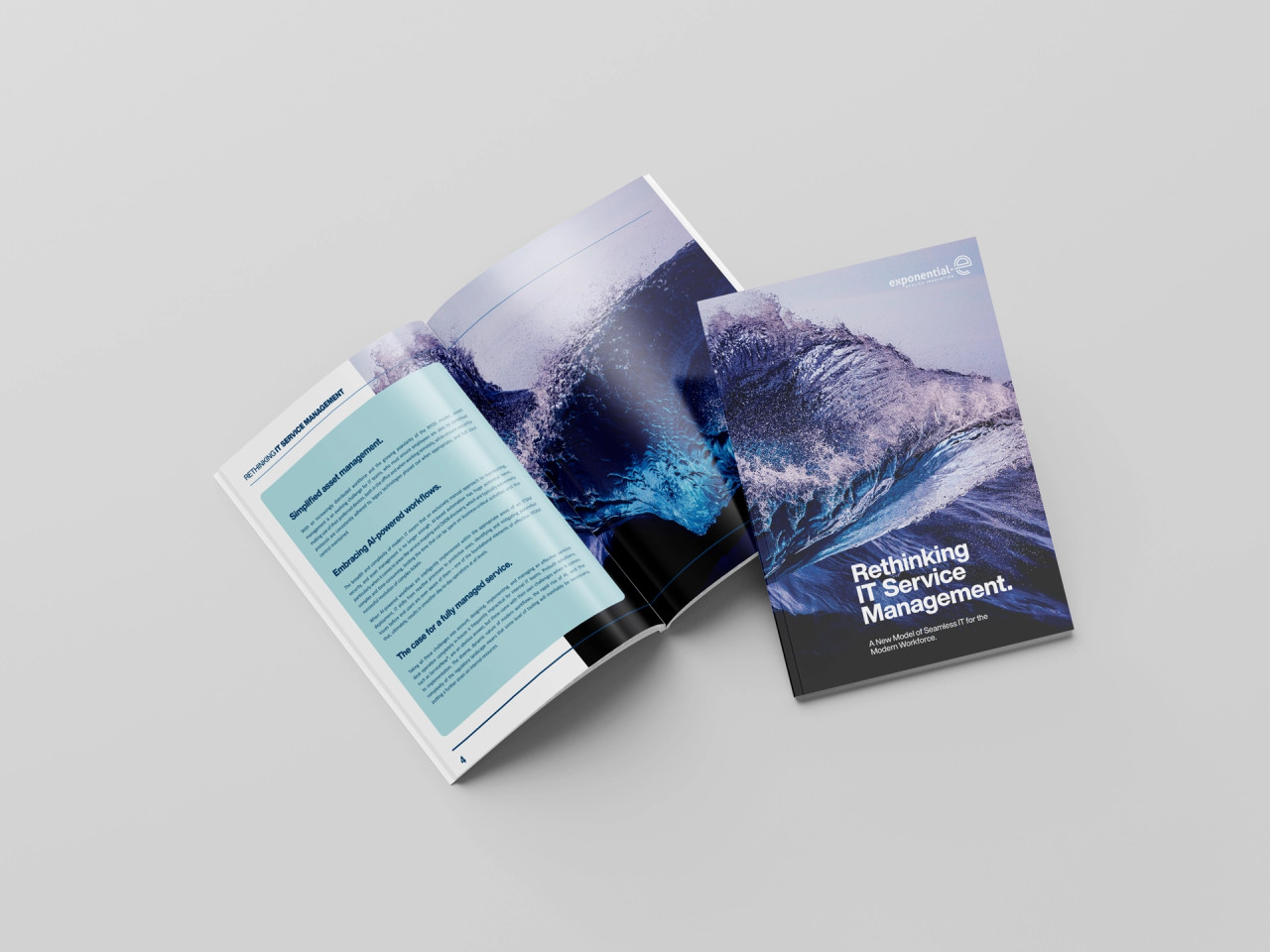In just a few short years, the way we work has changed forever, with employees at all levels now working at home, in the office, and on the move, communicating and collaborating with customers and colleagues in ways that would have previously been inconceivable. However, as we have seen in recent months, with numerous high-profile cyber-attacks on corporate infrastructure, we can never allow ourselves to become complacent when it comes to the security of critical data. In other words, while we should certainly be ready to explore new models of working, the opportunities on offer must not blind us to potential cyber risks.
Let's consider, for example, the now ubiquitous Bring Your Own Device (BYOD) model…
The BYOD model simply means employees are allowed to utilise whichever devices they like for work purposes, utilising them to connect to corporate networks in and out of the office. While this concept has existed for some years now, the COVID-19 pandemic and the resulting lockdowns saw numerous organisations rush to implement the concept at scale, ensuring their employees could transition to remote working with minimal disruption.
While this was largely successful in terms of maintaining BAU as much as possible, in the years since lockdown, many organisations have found that these hastily implemented policies have introduced a number of challenges – some obvious, some less so – for internal IT teams.
These include:
- Allowing employees the freedom to use their
preferred devices without compromising the integrity of corporate
infrastructure
- Ensuring users' personal data is not inadvertently put at risk
- Maintaining full compliance with an evolving range of data protection regulations
- Ensuring a diverse range of devices and operating systems all receive the latest security updates as soon as they become available
- Ensuring corporate security policies are consistently enforced every time employees connect to the corporate network, without this requiring an impractical level of manual effort
All IT teams will already have systems and processes in place for asset management, ensuring corporate devices are kept secure throughout their lifespans and that users are equipped with whatever they need to best fulfil their roles. However, when employees are free to connect through whatever devices they like, control and visibility become increasingly difficult to maintain.
IT Service Management (ITSM) platforms must therefore evolve, providing IT teams with the tools they need to accommodate BYOD and other new ways of working without requiring the inherent cost and complexity of building a bespoke solution in-house.
We explore these challenges in our latest report, Rethinking IT Service Management: A New Model of Seamless IT for the Modern Workforce, in which our IT experts posit a new approach that allows for a truly holistic view of all workflows while still providing employees with the flexibility to which they have become accustomed.
The regulatory landscape is more complex than ever, with organisations across the public and private sectors having to meet an increasingly stringent range of obligations across all aspects of their services, including their IT ecosystems. Far from a box-ticking exercise, this is an essential part of strengthening business' overall security and resilience in the face of numerous aggressive, highly sophisticated cyberattacks. Indeed, as we closed out the first half of 2025, 67% of medium businesses and 74% of large businesses had experienced a breach or cyberattack of some description[1].
The evolution of the regulatory landscape is an appropriate response to these threats, helping minimise the risk of serious breaches affecting critical services that citizens depend on. To this end, G-Cloud bids require organisations to have IT Service Management (ITSM) tooling in place, in full compliance with the ITIL standard, without which they will be unable to bid on some of the most sought-after public sector contracts.
This presents a number of singular challenges for organisations, many of whom will not have the time, resources, or internal expertise to develop a bespoke ITSM platform in-house. However, most off-the-shelf platforms lack the flexibility required to accommodate the required tooling.
As a result, too many organisations will miss out on potentially lucrative business opportunities. But rather than treat these new compliance obligations as a burden, we should look at them as an opportunity to establish a new standard for ITSM deployments, ensuring they continue to form the foundation of seamless, secure IT that supports organisations' efficiency, innovation, and ongoing growth. This means a 'best of both worlds' scenario, where the cost efficiency and streamlined deployments of off-the-shelf solutions is combined with bespoke solutions' ability to accommodate the most rigorous compliance obligations.
This will require a whole new approach to
ITSM – one which we explore in depth in our latest report, Rethinking IT Service Management: A New Model of Seamless IT for the Modern Workforce. Inside, our own IT specialists explore the emerging challenges that successful ITSM deployments present to organisations, along with all the operational and business benefits that a world-class platform can open up. If you are in any doubt about whether your ITSM platform will remain fit for purpose in the years ahead, do not make any new investment until you have considered this information. Read the report now, and do not hesitate to get in touch if you would like to explore any aspect of your unique digital journey with our experts.
Modern ITSM is no longer optional - it's essential. The rise of remote work, tougher regulation, and growing cyber threats has exposed the limits of traditional, reactive systems. Weak workflows, lack of integration, and compliance gaps are risks that can't be ignored.
This whitepaper sets out a new framework: AI-powered automation, integrated security, and scalable architecture built for modern demands. It explains why compliance isn't a burden but a competitive necessity - especially in the public sector - and argues that expert delivery is just as important as the right tools.
Dive in if you want to future-proof your IT, protect your data, and avoid being caught out when the next crisis hits.
Although the sector as a whole has traditionally been comparatively wary of the ever-increasing pace of technology, legal services are increasingly data driven, with an abundance of AI-related discussion emerging within legal technology circles. The core Document Management Systems (DMS) and Practice Management Systems (PMS) remain the centre of focus for how and where to deploy a variety of rapidly maturing SaaS platforms, or dedicated, highly customised suites.
On the 18th March 2024, the Information Commissioner's Office issued its updated guidance around the issuing of fines when organisations have been found liable for the integrity of their customers' or end users' data being compromised. It is already well-established now that failure to ensure critical data remains secure will result in costly fines, as we have seen repeatedly in multiple high-profile cases over the years.
Maximising performance, scalability, and compliance for a leading innovator in online banking
About Tandem Money
Tandem is 'The Good Green Bank', a fully regulated digital app‐based bank founded on the idea of putting customers' needs first whilst helping them save more than just their money by pushing for a sustainable future. The acquisition of green lender Allium in 2020, an established green homes lender, accelerated Tandem's mission into the green space. Tandem offers savings, mortgages, and loans to help customers green their properties, and eventually their lives.
Challenges
The key driver behind Tandem's ongoing digital transformation was earning a full banking license in 2018 - something that had been a core focus of their infrastructure's evolution. This meant their infrastructure would need to fulfil all legal and compliance obligations around the handling of financial data, and also demonstrate the highest standard of operational resilience.
At the time, Tandem's IT and telephony infrastructure was hosted at various separate data centres, while their banking application was hosted on AWS services, and a separate site set aside for workplace recovery. Although multiple sites were involved here, the whole network depended on the London office, creating a single point of failure.
After a comprehensive evaluation of various suppliers, Tandem engaged with Exponential‐e to ensure these critical elements could be securely interconnected in order to maximise performance and scalability and ensure all requirements for full bank status were achieved. Exponential‐e's deep experience in the financial sector was critical here, providing Tandem with complete confidence that the partnership would provide a positive contribution to their journey.
Solution
The networking solution delivered by Exponential‐e interconnected all Tandem sites via a high-performance WAN - a fully managed low‐latency solution that ensured consistent performance across all sites. This was implemented by a dedicated Exponential‐e account team, who project managed every stage of the deployment to ensure there would be no service disruption and that Tandem's long-term goals remained the primary focus throughout the deployment and beyond.
Critically, this fulfilled all compliance requirements regarding the handling and storage of financial data, while ensuring Tandem's teams would have the right tools at their fingertips at all times. To ensure a disruption free migration process, secure connections were created between Exponential-e's self‐owned network and Tandem's AWS services, allowing for a successful consolidation of the different elements of their infrastructure, and providing IT teams with a higher level of control and visibility.
As the partnership between Tandem and Exponential‐e evolved, a combination of a Virtual Private Network (VPN) and Office 365 was established as the ideal combination of solutions to further optimise Tandem's overall efficiency and enable effortless collaboration between their various teams, regardless of where they were located, with security policies applied automatically and role‐based segregation opening up a wide range of opportunities for remote working.
Throughout 2020, when the COVID‐19 pandemic forced organisations worldwide to rapidly transition to a remote workforce, the inherent flexibility and scalability of Tandem's infrastructure and a robust business continuity plan showed its true worth, as the entire workforce were able to begin working remotely with minimal disruption to day‐to‐day operations, and no compromise in terms of security and compliance. This option had already been utilised on an ad‐hoc basis by Tandem's engineers, but a scenario where it would need to be utilised on a company‐wide basis had been considered and factored into the business continuity plan, with tests taking place to ensure such measures would be viable, should they ever be needed.
In this way, Tandem has demonstrated how the right infrastructure, with the support of the right technology partner, provides organisations in even the most challenging sectors with the agility to pivot in response to unexpected, large‐scale shifts in the digital landscape. Tandem's long‐term digital transformation continues, with plans in place to bring its core banking suite in house and into the Cloud, for a further layer of control and flexibility.
Solution benefits
- High‐performance VPN connectivity across multiple sites, with secure connections to the core banking suite provider.
- Full compliance with all applicable regulations regarding the handling of financial and sensitive data.
- A stress‐free transition to remote working, with zero compromise in the security of users' financial and sensitive data.
- A strong foundation for ongoing Cloud transformation and consolidation.
Exponential-e is a trusted technology partner for organisations across the Finance sector, offering innovative solutions that drive security, compliance and optimal performance at all levels.
Find out more in our Finance Brochure.





